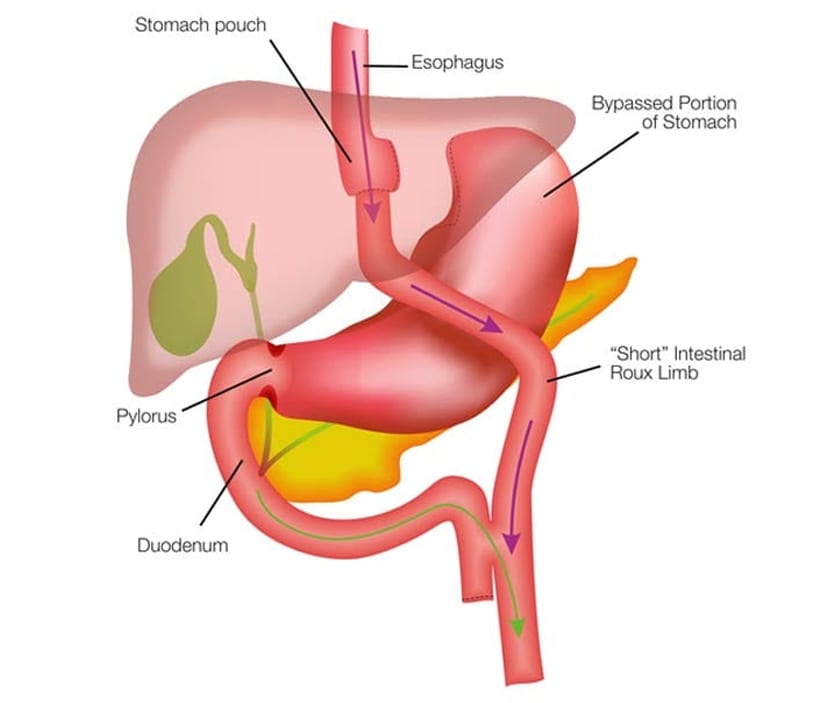The Gastric Bypass operation, also known as the Roux-en-Y gastric bypass, is one of the most commonly performed weight loss surgical procedures. It involves creating a very small 2-3 ounce gastric pouch and connecting it to a limb of small bowel. The reduction in the size of the stomach is the most significant of all weight loss surgical procedures. It is, however, important to note that the smaller stomach pouch does not function in the same manner as the original intact stomach. When you compare the stomach of the Sleeve Gastrectomy or the Duodenal Switch operation, their function and physiology is very similar to the normal anatomy. This is, however, not the case in the Gastric Bypass operation. The remnant stomach that connects to the small bowel does not, physiologically or mechanically, function the same as a normal intact stomach. This ultimately results in a number of complications that are unique to the gastric bypass operation. Complications include marginal ulcers, dumping syndrome, stricture at the site of the gastrojejunostomy anastomosis (where the stomach is attached to the small bowel), and nutritional deficiencies including iron and B12.
Even though the short-term results of the gastric bypass operation may be acceptable when measured by excess weight loss, the outcome of its long-term maintained weight loss, along with the associated complications of the surgery, make it a procedure that I do not recommend to patients.

